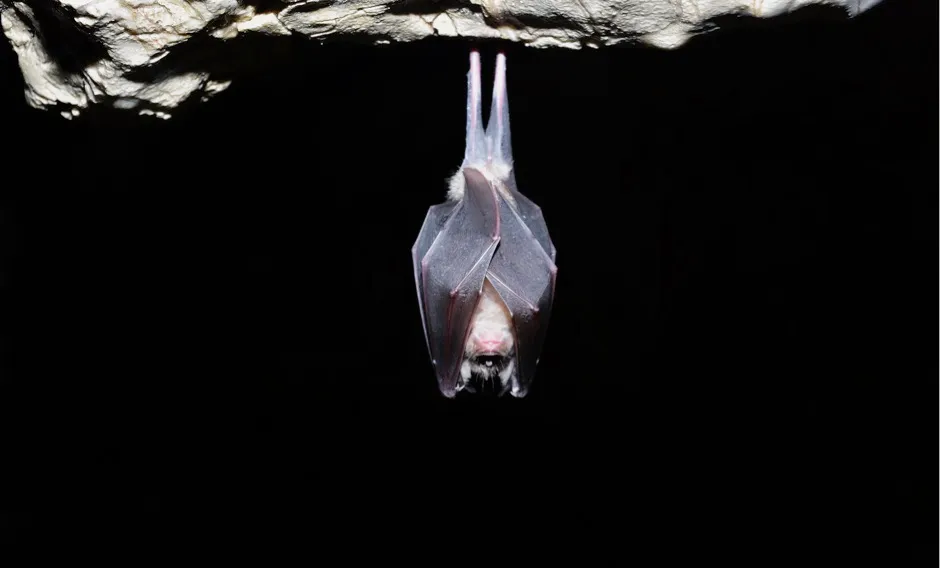Genes that allow bats to fight off deadly diseases such as coronaviruses have been uncovered by a team of global scientists, according to a study.
Researchers generated and analysed six highly accurate bat genomes, which start to uncover bats’ ability as mammals to fly, navigate complete darkness using sound (known as echolocation) and survive fatal infections such as the coronavirus that causes COVID-19 in humans.
A global scientists’ consortium that was set up to sequence the genomes of all living bat species, known as Bat1K, believes these genetic materials could be used as tools to identify the solutions evolved in bats and could be harnessed to alleviate human ageing and disease.
Read more about bats:
- Bats 'pose no greater viral threat' to humans than other species
- Tequila bats’ ancestral origins revealed by conservationists
- Moths with 'noise-cancelling' scales can hide from bats' echolocation
Michael Hiller, senior author of the study, of the Max Planck Institute of Molecular Cell Biology and Genetics in Dresden, Germany, said: “Our genome scans revealed changes in hearing genes that may contribute to echolocation, which bats use to hunt and navigate in complete darkness.
“Furthermore, we found expansions of anti-viral genes, a unique selection on immune genes and loss of genes involved in inflammation in bats.
“These changes may contribute to bats’ exceptional immunity and points to their tolerance of coronaviruses.”

Scientists discovered “fossilised viruses” in the DNA, which they believe is evidence of surviving past viral infections.
They say this shows bat genomes contain a higher diversity than other species, providing a record of historical tolerance to viral infection.
The team used new technologies to sequence the bats’ DNA to gather the genomes. New methods were then developed to assemble these pieces into the correct order and to identify the genes present.
Read the latest coronavirus news:
- Delirium, brain inflammation and stroke linked to COVID-19
- Synairgen drug 'prevents 79 per cent' of coronavirus cases progressing
- COVID-19 'more severe' in cold weather, study suggests
Senior author Dr Sonja Vernes, Bat1K co-founding director and UK Research and Innovation Fellow at St Andrews University, said: “These are the first reference-quality genomes for bats.
“Having such complete and well-annotated genomes allowed us unprecedented insight into the genetic and evolutionary abilities seen in bats.”
The study can be found in the Nature journal.
How do viruses jump from animals to humans?
Every animal species hosts unique viruses that have specifically adapted to infect it. Over time, some of these have jumped to humans – these are known as ‘zoonotic’ viruses.
As our populations grow, we move into wilder areas, which brings us into more frequent contact with animals we don’t normally have contact with. Viruses can jump from animals to humans in the same way that they can pass between humans, through close contact with body fluids like mucus, blood, faeces or urine.
Because every virus has evolved to target a particular species, it’s rare for a virus to be able to jump to another species. When this does happen, it’s by chance, and it usually requires a large amount of contact with the virus.
Initially, the virus is usually not well-suited to the new host and doesn’t spread easily. Over time, however, it can evolve in the new host to produce variants that are better adapted.
When viruses jump to a new host, a process called zoonosis, they often cause more severe disease. This is because viruses and their initial hosts have evolved together, and so the species has had time to build up resistance. A new host species, on the other hand, might not have evolved the ability to tackle the virus. For example, when we come into contact with bats and their viruses, we may develop rabies or Ebola virus disease, while the bats themselves are less affected.
It’s likely that bats were the original source of three recently emerged coronaviruses: SARS-CoV (2003), MERS-CoV (2012) and SARS-CoV-2, the cause of the 2019-20 coronavirus outbreak. All of these jumped from bats to humans via an intermediate animal; in the case of SARS-CoV-2, this may have been pangolins, but more research is needed.
Read more:
